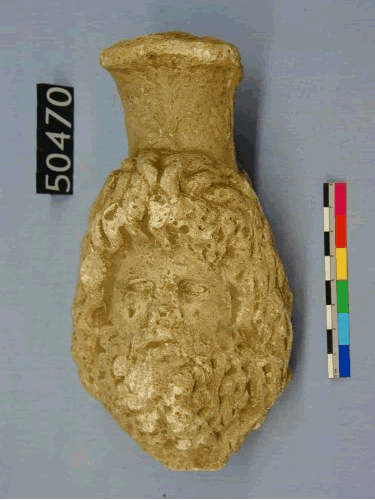| Homepage | Timeline | Maps | A-Z index | Learning |
Memphis: Plaster head of Serapis

Serapis is a Greek-Egyptian god, worshipped in Egypt, but also in other parts of the Mediterranean and Roman. The god was in Alexandria closely related to the king's house. In Alexandria there was also the biggest temple (Serapeion), with a cult statue, made by the Greek artist Bryaxis. The plaster head in the Petrie Museum seems to be influenced by this statue. Another important cult place was Memphis. The temple of Serapis in Memphis, which is only badly preserved was built next to the burial places of the Apis bulls at the necropolis near modern Saqqara. The worship of Imhotep, who was identified with Asclepios, also took place in that temple. The cult of Serapis appears in the early Ptolemaic Period. The god is not connected with any myths, therefore it was believed that the cult was 'artificially' introduced by Ptolemy I. Ancient authors (Plutarch, Tacitus, Clement) report that Ptolemy dreamed that the god commanded to bring the god's statue from Sinope to Alexandria.
This head dates to the Roman period because of the modius or kalathos on his head, which is not found on Ptolemaic heads of Serapis. The head is solid with an unfinished back.
other images of Serapis in the Petrie Museum (mostly unprovenanced)
(click on the images for an larger picture)
|
glass stamp
|
terracotta
|
lamp
|
ring
|
seal
|
Further reading:
|


